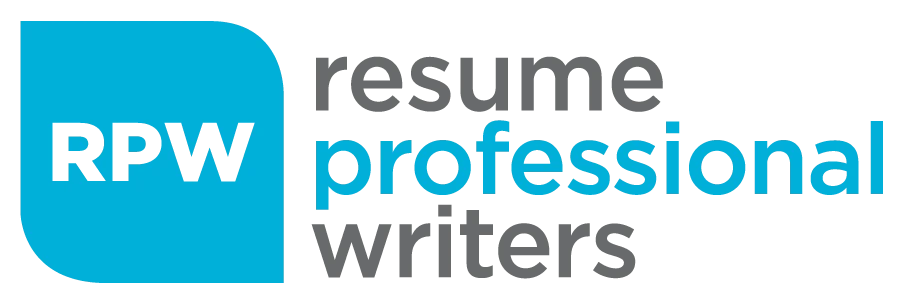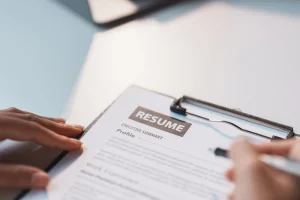When exploring what is a resume, many job seekers quickly realize the pressure of creating one that can open doors—or close them. From worries about applicant tracking systems (ATS) filtering out applications to concerns about how experience is presented, the resume often decides whether hiring managers read beyond the first few seconds. Across industries, even a small mistake or weak presentation can mean the difference between getting a callback and being overlooked.
With decades of combined expertise in career strategy and resume development, experts emphasize that a well-built resume is far more than a job history—it is a core marketing tool, personal brand statement, and credibility marker. This resource serves job seekers ranging from students and career changers to executives and transitioning veterans, offering a comprehensive understanding of what a resume is, the formats available, essential components, and strategies for standing out in the job market.

What is a Resume
A resume is a structured document that outlines a candidate’s qualifications, career history, skills, and career achievements. In the American job market, it is typically one to two pages long, though certain fields—such as federal employment—require significantly longer formats to capture detailed career information. Unlike a cover letter, which provides narrative context and personalization, the resume delivers concise, fact-based data that helps employers and their ATS software quickly evaluate relevance.
Resumes serve two primary purposes: first, they must demonstrate alignment between the candidate’s qualifications and the job requirements; second, they must do so in a way that is both visually accessible to human recruiters and technically optimized for ATS scanning. A strong resume balances technical criteria, such as the use of job-specific keywords, with persuasive elements, such as quantified results and professional branding statements.
Across industries—from healthcare to information technology to finance—recruiters depend on resumes to make first-round decisions. The Society for Human Resource Management (SHRM) has consistently emphasized that resumes remain the most widely required first step in the application process across U.S. organizations. Despite recruitment technologies evolving, the resume endures as the centerpiece of professional candidacy.

The Core Purpose of a Resume
When asking what is a resume, it’s important to understand that its main purpose is to earn you an interview, not to secure the job directly. Since hiring managers often review dozens or even hundreds of applications, a well-optimized resume works as a filter to show if you meet the requirements and offer additional value. Unlike portfolios, references, or interviews, the resume functions primarily as a gateway document.
Employers use resumes to answer three primary questions: can the candidate do the job, will the candidate deliver results, and does the candidate align with the team or organizational culture. When structured properly, resumes demonstrate evidence of skills and results. For example, a healthcare professional should show both clinical expertise and measurable patient care outcomes, while a marketing manager should highlight campaign results through metrics such as conversion rates and revenue growth.
Additionally, resumes form the foundation for interviews. Hiring personnel frequently base their interview questions on resume content, drilling down into summarized experiences. A weak or vague resume can therefore lead to weaker interview performance. Conversely, a compelling resume featuring specific metrics and measurable outcomes sets up the candidate to discuss achievements confidently.
Essential Resume Sections
While resume styles vary across candidates, several essential sections are consistently expected by hiring managers and ATS filters. These include:
- Contact Information: The candidate’s full name, phone number, email address, city and state (not full street address), and a LinkedIn profile if available.
- Professional Summary or Objective: A brief statement providing an at-a-glance understanding of experience, accomplishments, and career direction.
- Skills Section: A list of technical and soft skills aligned with the role, formatted for ATS readability.
- Work Experience: Employment history presented in reverse-chronological order, emphasizing achievements and quantifiable results over job duties.
- Education: Degrees, certifications, and relevant continuing education, especially if directly tied to the role.
- Additional Sections: Depending on the individual, this may include publications, professional affiliations, volunteer experience, security clearances (especially for federal applications), or industry credentials.
Each of these sections must be carefully tailored for relevance. For example, in technology resumes, certifications such as CompTIA Security+ or AWS cloud credentials may prove essential. In healthcare resumes, licenses and board certifications take precedence. Customization ensures alignment with job descriptions, improving both ATS scoring and recruiter interest.
Resume Formats and When to Use Them
Three primary resume formats dominate the U.S. hiring landscape: chronological, functional, and combination. Each serves a unique purpose depending on the applicant’s career stage, experience type, and target role.
- Chronological Resume: The most common format, listing job experience in reverse order. Best suited for professionals with consistent career progression in one industry.
- Functional Resume: Centered on skills instead of work history. Often used by career changers or professionals with gaps in employment, though some recruiters approach it with caution due to reduced timeline transparency.
- Combination Resume: Blends both skills and chronological order, making it ideal for professionals who need to highlight transferable expertise alongside solid career history.
Executives frequently favor the combination format to highlight leadership impact while retaining chronological weight. Entry-level job seekers may benefit from functional or hybrid approaches if work histories are limited, while seasoned professionals often rely on chronological layouts to showcase progressive roles. The role itself often dictates format selection; federal resumes, for example, have highly standardized requirements that differ from private-sector templates.

Resume Optimization for ATS Systems
HR software known as Applicant Tracking Systems screens resumes before hiring managers ever see them. According to Jobscan, roughly 99% of Fortune 500 companies employ an ATS to filter candidates. As a result, resumes must be both human-readable and machine-readable. Formatting choices, keyword density, and section labeling all play crucial roles in ensuring successful parsing.
Key optimization practices include using standard headers like “Work Experience” instead of creative alternatives, embedding industry-relevant keywords from job descriptions, and avoiding overly complex formatting such as graphics, text boxes, or unusual fonts that ATS software may fail to recognize. Strategic keyword placement often determines whether applications proceed to human review.
Modern ATS platforms also use scoring algorithms that compare a resume against the job description. Candidates who align closely with the required qualifications rank higher. Therefore, customizing a resume for each application, rather than recycling a generic version, substantially increases success rates. For job seekers, tailoring done correctly makes the difference between unseen submissions and interview invitations.
Mistakes That Weaken a Resume
Despite best intentions, many resumes contain mistakes that reduce credibility or discourage recruiters. Common pitfalls include:
- Listing Duties Instead of Achievements: Generic job descriptions fail to stand out, whereas quantified outcomes prove impact.
- Poor Formatting: Dense blocks of text or inconsistent styling reduce readability.
- Irrelevant Information: Including outdated skills or unrelated work experience overstuffs the resume without adding value.
- Employment Gaps Unaddressed: Leaving unexplained breaks without context can raise red flags.
- Spelling and Grammar Errors: Such errors suggest carelessness and lack of professionalism.
A resume that sidesteps these issues demonstrates attention to detail and professional credibility, ultimately improving candidate appeal in competitive markets.
How Resumes Differ Across Career Levels
Not all resumes follow the same pattern. Career stage dramatically influences how a resume should be structured:
- Entry-Level: Focus on internships, volunteer experience, academic achievements, and transferable skills.
- Mid-Career: Highlight career progression, measurable achievements, and specialized expertise.
- Executive: Showcase leadership impact, strategic decision-making, and business outcomes supported by metrics such as revenue growth, cost savings, or operational efficiency.
- Federal Applicants: Detail-oriented documentation following strict Office of Personnel Management (OPM) guidelines, often 5+ pages in length.
- Military-to-Civilian Transitions: Translate military terminology into civilian-friendly language while emphasizing transferable leadership and technical skills.
By aligning each resume structure with expectations at different stages, job seekers boost their ability to secure interviews suited to their professional path.
Real-World Resume Success Example
A mid-career IT professional transitioning into cybersecurity illustrates the effectiveness of a customized resume strategy. Initially, the candidate’s resume focused on broad IT administration duties, receiving minimal responses. After restructuring into a combination format, incorporating specific technical certifications (CISSP and CompTIA Security+), and highlighting quantified security improvements such as “reduced breach attempts by 43% after infrastructure enhancements,” the candidate began receiving multiple interview invitations within weeks. The focused rewriting transformed the resume from a generic application into a persuasive career marketing document that resonated with both ATS filters and cybersecurity recruiters.

Shaping a Resume Into a Career Tool
A resume remains the most influential career document and acts as a personal marketing tool that opens opportunities across industries. Its function extends far beyond job applications, supporting professional branding, networking, and interview preparation. The most successful candidates treat their resume as an evolving document—updated with every new role, milestone, and achievement to ensure ongoing relevance. Many professionals also rely on resume help to ensure competitive positioning and ATS compliance in an increasingly selective hiring environment.
Frequently Asked Questions
What is the difference between a resume and a CV?
In the U.S., a resume is typically one to two pages long and tailored for specific jobs, while a CV (curriculum vitae) is a much longer academic document detailing a full history of education, publications, and research. CVs are usually reserved for academic, scientific, or medical positions, whereas resumes are used across private, federal, and corporate roles.
How long should a resume be?
The ideal length is one page for recent graduates or early-career professionals, and up to two pages for those with more extensive experience. Federal resumes, however, may run several pages due to strict government requirements. The key principle is conciseness without sacrificing relevance.
Do all resumes need an objective statement?
Modern resume strategy favors a professional summary over an objective. An objective states what the candidate seeks, while a summary highlights what the candidate offers. Employers generally find value in summaries that demonstrate alignment with the role.
Should job seekers include references on a resume?
No, references should not be listed directly on resumes. Instead, job seekers can prepare a separate reference sheet upon request. Including references prematurely consumes space better used for showcasing achievements and qualifications.
How often should a resume be updated?
Best practice calls for updating a resume each time a candidate gains a new role, credential, or significant accomplishment. This keeps the document current and ensures readiness when opportunities arise, avoiding rushed last-minute preparation.








